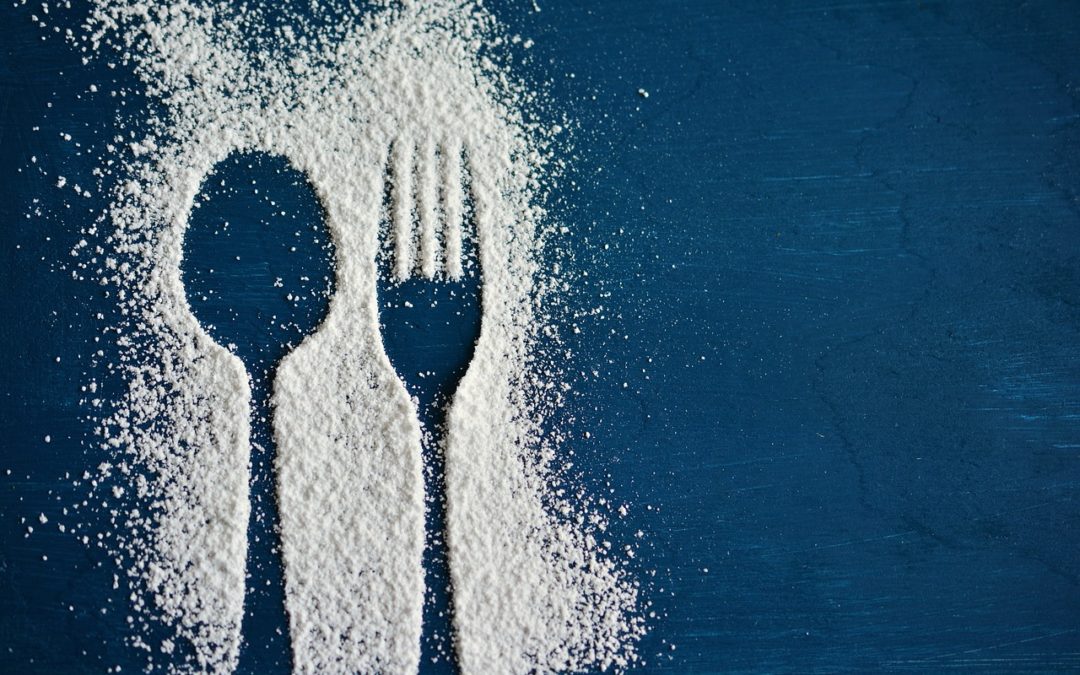In piece two of the series on eating disorders, we have already explored how dopamine and serotonin play vital roles in influencing eating disorders. In this article, we’re going to take a closer examination of what happens in the brains of those who live with the life-threatening problem of disordered eating.
Two Types of Nervosa, What’s the Link?
 The term Nervosa means “lack of appetite” which is misleading but close to what happens when a person forms anorexia or bulimia.
The term Nervosa means “lack of appetite” which is misleading but close to what happens when a person forms anorexia or bulimia.
The Relationship Between Anorexia and Bulimia Nervosa has been targeted for research to find a way to end the suffering of those who experience them. Both disorders are not well-understood and strike women during adolescence. However, men are also affected by eating disorders and we shall tackle that subject in piece four of this series.
Both anorexia and bulimia have similar puzzling symptoms. Among them are:
- Body image distortions
- Denial of emaciation
- Resistance to treatment
- Binge-purge behaviors
- Perfectionism
- Mental discomfort or suffering
- A reduced ability to experience pleasure
Both Anorexia nervosa and bulimia nervosa have high mortality rates with anorexia having the highest death rate of any other psychiatric disorder.
The Neurotransmitters Involved in Eating Disorders
 This section was covered in piece two of this series on eating disorders, but it is so important it will appear in this one also.
This section was covered in piece two of this series on eating disorders, but it is so important it will appear in this one also.
Changes in brain chemicals also may play a role in eating disorders. Some of these changes involve the neurotransmitters dopamine and serotonin.
Dopamine is known as the pleasure chemical and it helps humans by allowing them to feel satisfaction and joy. However, anorexia has been associated with an over-production of dopamine that leads to anxiety, and the ability to do unpleasant things such as not eating. Dopamine is also indicated as a culprit in the other eating disorders as well (Broft et. al., 2012) (Bello & Hainal, 2010).
Serotonin is responsible for, other things, mood, sleep, and feeling hungry. Research has discovered that people currently in the throes of anorexia nervosa have significantly lower levels of serotonin in their cerebrospinal fluid than those who do not (Kaye et. al., 1991).
Tryptophan. A study found that the amino acid tryptophan a vital building block for serotonin is depleted in people living with an eating disorder. These researchers gave 22 women, 10 who had an eating disorder and 12 who did not, an amino acid mixture without tryptophan and then a mixture containing tryptophan.
When the women with a history or eating disorders took the mixture without tryptophan they experienced dysphoria, increased body image problems, and a feeling of loss of control when they were eating (Smith, et. al., 1999).
The reason for the change is the relationship between tryptophan and serotonin. Without tryptophan, there is not enough serotonin circulating in the brain. This leads to all the problems listed above under heading serotonin.
Dysphoria and Chemicals as Possible Causes for Anorexia and Bulimia
 In a paper written in 2007, the researchers described how considerable evidence suggests that altered serotonin levels in the brain can lead to “dysregulation of appetite, mood, and impulse control” (Kay, 2007).
In a paper written in 2007, the researchers described how considerable evidence suggests that altered serotonin levels in the brain can lead to “dysregulation of appetite, mood, and impulse control” (Kay, 2007).
In the paper, Kay reported that brain imaging studies done by other researchers have found disturbances in the 5-HT, molecules attached to metal atoms in the brain, are not functioning properly. This disturbance presents itself when people become ill with eating disorders and remain disturbed after a person has recovered from anorexia and bulimia nervosa.
It could also be that disturbances of the 5-HT via alterations of nerve activity by the delivery of stimuli such as chemical agents, predates the onset of an eating disorder. This means that someday when researchers know enough about these disturbances in the neurochemicals of the brain they may be able to not only catch it before it presents but also find ways to inhibit it from becoming a problem.
The paper went on to also state that the dysphoric (consistently down mood) temperament of some people may cause individuals to become vulnerable to forming a disturbed appetite. Restricting food can temporarily relieve the suffering of dysphoria, which usually begins in adolescence.
Puberty, Anorexia, and Bulimia
Another paper stated that the dysregulation mentioned in the above section about 5-TH dysregulation is related to female gonadal steroids or changes related to age. Stress increases the anxiety of the adolescent increasing their temperament that makes them lean toward having obsessions.
People who develop an eating disorder sometimes discover that by reducing their intake of food they can modulate their 5-TH function and thus temporarily lower their anxious mood. They then enter a horrendous cycle chasing the relief of their anxiety and dysphoria, in other words, they are self-medicating using their eating habits (Lam, et. al. 2017).
The problem is that malnutrition causes their brain dysregulation to recur meaning they remain in a dysphoric mood which triggers the cycle to repeat all over again.
Simply put, steroids released by the glands in puberty change and when added to the stress of being a teenager increases their tendency to obsess. Teens who begin restricting their intake of food may do so to relieve themselves of the horrible suffering of dysphoria. However, malnutrition and other effects of not eating triggers the brain into more dysregulation causing the cycle of increased dysphoria and binge, purge, or not eating to repeat.
The Genetic Component to Eating Disorders
 Genetics may play a vital role in the formation of an eating disorder. It has been found in research that relatives of a person experiencing an eating disorder are 7-12 times likely to develop an eating disorder (Lilenfeld, et. al. 1998). Also, data from twin studies estimate that heredity accounts for 30-80% of eating disorders (Bulik, et. al., 2006).
Genetics may play a vital role in the formation of an eating disorder. It has been found in research that relatives of a person experiencing an eating disorder are 7-12 times likely to develop an eating disorder (Lilenfeld, et. al. 1998). Also, data from twin studies estimate that heredity accounts for 30-80% of eating disorders (Bulik, et. al., 2006).
A family history of major depressive disorder and OCD played a role in the formation of eating disorders as did anxiety disorders in family members.
To explain further is a family member has an eating disorder, then the adolescent in that family might develop one as well. This is because there might be a common thread of a family history of anxiety and major depression that exacerbates the chances that an adolescent will form an eating disorder.
It Is Not Hopeless
Reading this information can be daunting and cause people to lose hope. However, that shouldn’t be the case.
Scientists are closer than ever before in understanding what happens in the brain of someone who is experiencing an eating disorder. They can see with fMRI and PET scan technology what regions of the brain play a part and through the examination of neurochemicals and neurotransmitters understand why people form EDs and how they might be combatted.
Yes, inheritance and having dysphoria in adolescence play vital roles in the formation of an eating disorder, but all is not lost.
One should never, ever give up. The disorder those with an eating disorder experience is not their fault, in fact, it is no one’s fault. People with eating disorders are not damaged, and they are not bad.
Like someone with family history and exposure to environmental chemicals might form cancer, victims of eating disorders brain chemistry changes plus inherited genes triggered an illness.
“You may not always have a comfortable life and you will not always be able to solve all of the world’s problems at once but don’t ever underestimate the importance you can have because history has shown us that courage can be contagious and hope can take on a life of its own.” ~ Michelle Obama
References
Bello, N. T., & Hajnal, A. (2010). Dopamine and binge eating behaviors. Pharmacology Biochemistry and Behavior, 97(1), 25-33. DOI: 10.1016/j.pbb.2010.04.016
Broft, A., Shingleton, R., Kaufman, J., Liu, F., Kumar, D., Slifstein, M., … & Walsh, B. T. (2012). Striatal dopamine in bulimia nervosa: A pet imaging study. International Journal of Eating Disorders, 45(5), 648-656. DOI: 10.1002/eat.20984
Kaye, W. H., Gwirtsman, H. E., George, D. T., & Ebert, M. H. (1991). Altered serotonin activity in anorexia nervosa after long-term weight restoration: does elevated cerebrospinal fluid 5-hydroxyindoleacetic acid level correlate with rigid and obsessive behavior? Archives of General Psychiatry, 48(6), 556. DOI: 10.1001/archpsyc.1991.01810300068010
Bulik C.M., Sullivan P.F., Tozzi F., Furberg H., Lichtenstein P., Pedersen N.L. Prevalence, heritability, and prospective risk factors for anorexia nervosa. Arch. Gen. Psychiatry. 2006;63:305–312. DOI: 10.1001/archpsyc.63.3.305.
Frank, G. K., & Kaye, W. H. (2012). Current status of functional imaging in eating disorders. International Journal of Eating Disorders, 45(6), 723-736.
Kaye, W. (2008). Neurobiology of anorexia and bulimia nervosa. Physiology & behavior, 94(1), 121-135.
Kaye, W. H., Fudge, J. L., & Paulus, M. (2009). New insights into symptoms and neurocircuit function of anorexia nervosa. Nature Reviews Neuroscience, 10(8), 573.
Lam, Y. Y., Maguire, S., Palacios, T., & Caterson, I. D. (2017). Are the gut bacteria telling us to eat or not to eat? Reviewing the role of gut microbiota in the etiology, disease progression and treatment of eating disorders. Nutrients, 9(6), 602.
Lilenfeld L.R., Kaye W.H., Greeno C.G., Merikangas K.R., Plotnicov K., Pollice C., Rao R., Strober M., Bulik C.M., Nagy L. A controlled family study of anorexia nervosa and bulimia nervosa: Psychiatric disorders in first-degree relatives and effects of proband comorbidity. Arch. Gen. Psychiatry. 1998;55:603–610. DOI: 10.1001/archpsyc.55.7.603.
Riva, G. (2010). Neuroscience and Eating Disorders: The role of the medial temporal lobe. Nature Precedings, 1-1.
Riva, G. (2014). Out of my real body: cognitive neuroscience meets eating disorders. Frontiers in human neuroscience, 8, 236.
Riva, G. (2012). Neuroscience and eating disorders: The allocentric lock hypothesis. Medical Hypotheses, 78(2), 254-257.
Southgate, L., Tchanturia, K., & Treasure, J. (2005). Building a model of the etiology of eating disorders by translating experimental neuroscience into clinical practice. Journal of Mental Health, 14(6), 553-566.
Smith, K., Fairburn, C., &Cowen P. (1999). Symptomatic Relapse in Bulimia Nervosa Following Acute Tryptophan Depletion. JAMA Psychiatry. 56(2), 171-176.
Van den Eynde, F., Suda, M., Broadbent, H., Guillaume, S., Van den Eynde, M., Steiger, H., … & Treasure, J. (2012). Structural magnetic resonance imaging in eating disorders: a systematic review of voxel‐based morphometry studies. European Eating Disorders Review, 20(2), 94-105.

My name is Shirley Davis and I am a freelance writer with over 40-years- experience writing short stories and poetry. Living as I do among the corn and bean fields of Illinois (USA), working from home using the Internet has become the best way to communicate with the world. My interests are wide and varied. I love any kind of science and read several research papers per week to satisfy my curiosity. I have earned an Associate Degree in Psychology and enjoy writing books on the subjects that most interest me.

